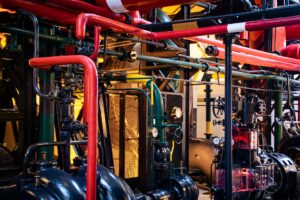Understanding Solar Panel Pricing in the Philippines: Is It Worth the Investment?
Solar energy is gaining momentum in the Philippines as more homeowners and businesses seek sustainable and cost-effective power solutions. With the country’s abundant sunlight, solar power presents a practical alternative to rising electricity costs. One of the most common questions people ask is whether the investment is truly worth it. A key factor in this decision is the solar panel cost, which varies based on system size, brand, and installation. While the upfront expense may seem high, the long-term savings and environmental benefits often outweigh the initial costs, making solar energy an increasingly attractive option for Filipino households and enterprises.
Cost of Solar Panels in the Philippines
The cost of solar panels in the Philippines varies according to numerous factors. Residential solar panel systems typically cost between ₱80,000 and ₱250,000, depending on size and energy production. Larger commercial systems might cost between ₱500,000 and several million pesos. The cost of a solar panel system is determined by the brand and efficiency of the panels, the type of inverter used, the complexity of installation, and whether batteries are included for energy storage.
Premium brands with greater efficiency ratings naturally cost more, but they often provide better long-term performance and durability. Installation prices might also vary according to roof type, location, and system size. For enterprises that require larger capacity systems, installation and equipment expenses are much higher, but so are the potential energy savings. Overall, recognizing these aspects is critical for determining the true worth of investing in solar energy.
Energy Savings and Long – Term Benefits
Investing in solar panels can considerably cut long-term electricity expenditures by generating free, renewable energy from sunlight. In the Philippines, where electricity costs are among the highest in Southeast Asia, this can result in significant long-term savings. The typical payback period for a residential solar panel system is 4 to 7 years, depending on system size, daily energy usage, and available sunlight. Homes in places with regular sunlight and high electricity usage typically have a faster return on investment.
Larger systems generate more power, resulting in larger potential savings, but they also have a higher initial solar panel cost. Solar panels eventually “pay for themselves” by offsetting a portion—or in some circumstances, the majority—of monthly electricity expenditures, and continue to produce savings for 15 to 25 years or more. This makes solar energy an economical choice for many Filipino households and companies.
Environmental Impact
Choosing solar energy is not only a sensible financial decision; it is also an effective strategy to safeguard the environment. Solar power, unlike fossil fuels, produces electricity without generating damaging greenhouse gasses or pollutants. Investing in solar panels allows you to dramatically reduce your carbon footprint, which helps combat climate change and air pollution.
Each kilowatt-hour of solar energy produced saves approximately one kilogram of carbon dioxide from entering the environment. Over the life of a solar panel system, this adds up to thousands of kilograms of avoided emissions.
In a country like the Philippines, where climate change is a real danger, transitioning to solar energy is critical to establishing a more sustainable future. Not only will you save money on your electricity bills and solar panel costs over time, but you will also help to clean up the air, make communities healthier, and leave a greener planet for future generations.
Maintenance and Durability
Solar panels are noted for their lifespan and durability, making them a sound long-term investment. Most high-quality solar panels endure between 25 and 30 years on average, with many continuing to produce electricity even after that time frame—albeit at a slightly reduced efficiency. These systems are built to resist a variety of weather conditions, including heavy rain, strong winds, and extreme heat, making them perfect for the Philippines’ tropical climate. Maintenance is minimal; periodic cleaning and routine inspections are usually sufficient to keep the system working well.
Inverters, which transform solar energy into usable electricity, may require replacement after 10 to 15 years, but this is a normal component of system maintenance. Despite the initial cost of solar panels, their long-term durability and low maintenance requirements make them a hassle-free investment. With regular maintenance, solar panels may provide constant energy savings for decades, providing piece of mind and sustainable energy with little effort.
Key Takeaway
Solar panels are a smart investment for both homeowners and businesses in the Philippines, offering long-term savings, energy independence, and environmental benefits. While the initial solar panel cost may seem high, the reduction in electricity bills, low maintenance, and government incentives make it a cost-effective solution over time. With rising energy prices and a growing need for sustainable power, now is the perfect time to consider solar. It’s important to assess your energy usage, location, and budget to determine the right system. Weigh the upfront expense against future benefits—and invest in a cleaner, more efficient energy future.













